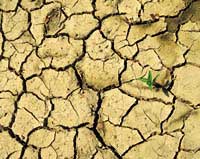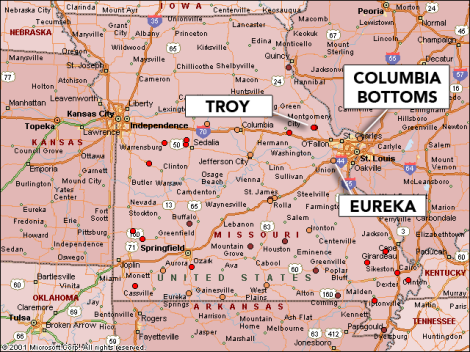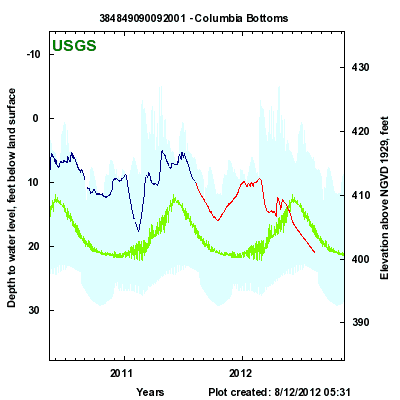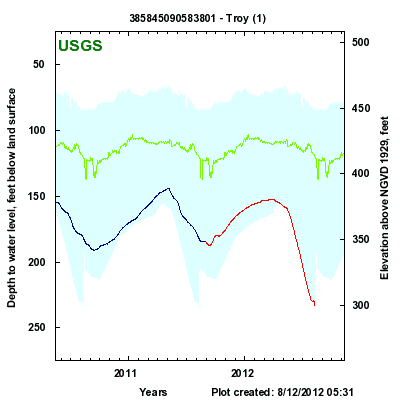Last week, we outlined how the drought is depleting water reserves in American aquifers faster than expected. This is bad news over the long term, as some long-standing sources can take millennia to refill.
It is also bad news over the short term. From the St. Louis Post-Dispatch:
[Y]ou can add residential water wells to the list of casualties claimed by the Drought of 2012.
For months, farmers have been forced to drill deeper wells to water parched crops and feed livestock. But in recent weeks, homeowners across the state have reported that they can’t perform basic tasks such as doing laundry or washing dishes, let alone even think about watering their flower beds. …
The depleted supply isn’t just from the lack of rain, said Renee Bungart, a spokeswoman for the Missouri Department of Natural Resources. The month of July was the hottest on record, which probably prompted residents to use more water.
The U.S. Geological Survey monitors water levels at wells around the state. Here’s the state map. St. Louis is in the eastern part of the state, and we’ve labelled nearby monitoring wells.
Below are the water levels at each of the locations labelled above. The following key applies to each graph.
![]()
We’ve obviously saved the worst for last. Water levels in the northwestern part of St. Louis are near the historic minimum.
As the water drops, it’s understandably leaving surface wells empty. That means busy times for Danny Flynn, owner of a well-drilling company:
In recent weeks, Flynn said, he’s heard from 50 to 100 customers whose wells have run dry. His employees are working 60 hours a week trying to keep up with the demand. …
“I’ve been in the water well business my whole life,” he said. “I never seen anything like it.”
Flynn said that most of the wells that have run dry are 250 to 450 feet deep.
“Six hundred feet seems to be the magic number,” said Mary Anthonis, of Wildwood. “Nobody waters (their lawns) unless they are in a McMansion.”
St. Louis has also seen 26 heat-related deaths since the beginning of the summer. The hottest July ever means that the city has broken its record for the most days with highs over 105 degrees — and it’s still early August.







